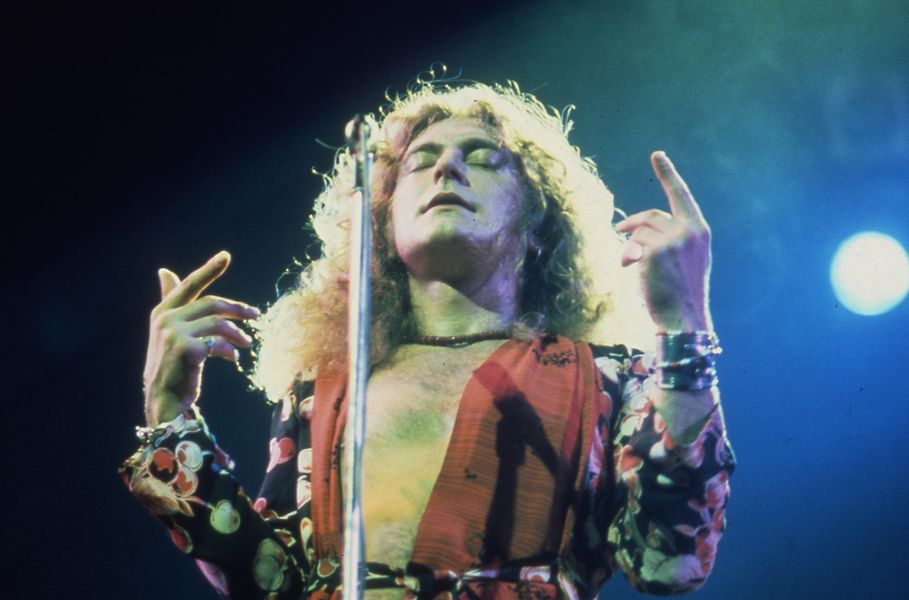Different bands get their source of inspiration from many places, which can often account for a band’s complete identity. For example, The Clash are a political force, The Beatles often looked towards relationships, and The Rolling Stones were often very subversive — Led Zeppelin, however, were on a completely different plain. It seemed that they pulled from the hypersexual, mystic worlds, black magic and, of course, Lord of the Rings. Their mixture of influences was, at times, almost dizzying to the point of confusion but yet mysterious and only adding to their allure.
Zeppelin came crashing onto the scene in 1969 with their self-titled album, which many would argue is the greatest debut of any band ever. Led Zeppelin II would prove to carry the same kind of energy with songs written in a similar vein. This would largely be the case until their fifth album, Houses of the Holy, which, while it did provide the same kind of expertise in songwriting, included songs that were more elusive than ever, taking the listener to an even further off place. By this point, Led Zeppelin had been touring pretty consistently, so when it came time to work on their sixth record, Physical Graffiti, many questioned how long Led Zeppelin could carry on for and, more importantly, how they were going to outdo themselves. Instead of searching for more mystical plains and far-out musical explorations, the band decided to strip themselves bare and show their unabashed musical DNA.
Led Zeppelin are in their rawest form here. If there were any pretensions present in their previous albums, rest assured, there are absolutely none in Physical Graffiti. By the time 1975 arrived, Led Zeppelin were an extremely well-oiled band paying homage to their influences of Chicago blues and laying the groundwork for countless bands to hope to one day try and emulate them, usually in some degree of futility.
“The nucleus of that goes right back to Chicago blues,” Jimmy Page said about the songs on the album. “It’s going from all manners of extremes in the equation. I think we done that even in the first album, the second album, but here, being given the opportunity of a double album, then obviously all of these character pieces, it’s just that thing of the multi-faceted diamond, that’s what it is.”
Many were sceptical of whether Led Zeppelin could pull off a double LP and still have it be successful. This was part of Zeppelin’s brilliance, and with Physical Graffiti they proved that they could really do whatever it is they wanted as they had maintained much of their creative control since the get-go. In the beginning, Led Zeppelin was initially a failed recuperation by Jimmy Page of the Yardbirds for a contractual obligation he had with the band to tour Europe. Out of his own pocket, Page paid for the production of their first album — a total of 30 thousand pounds. It really was a make or break moment. Since their first album was successful, Page and the rest of the band were able to continue in this fashion.
Zeppelin returned to Headley Grange and recorded the album in a mobile studio. Jimmy Page spoke on what it was like leading up to the record and the nature of the recording process: “We had just gone through a real lengthy leg of touring. And we had a bit of a break, time for people to go on holiday and that with their families, and then the recording date was put in the schedule, and what it was, was actually to return back to Headley Grange where we had done the fourth album and have a mobile recording track – a multi-track truck.”
Led Zeppelin lived and breathed music while they stayed at Headley Range, a former farmhouse now turned into a musician’s haven. Page continued, “From our first visit to Headley Range, I really understood what we could do there. We had the benefit of the hallways which gave this massive drum sound. I wanted to return to that, have all these sonic options, to push it even further.”
The important elements that went into creating Physical Graffiti were momentum and a bunch of ideas Page had on the back burner because of this momentum. “And that was it, before going in there, we sort of knew instinctively, in the pit of our stomachs that it was going to be great, that wonderful things were going to happen,” Page added.
Despite doubts on whether a double LP would spawn any hits, Led Zeppelin not only delivered raw honesty in a new and fresh interpretation of the blues, but they also wrote one of the most memorable songs of our century, that has steeped into the fabric of our culture – namely, ‘Kashmir’. Jimmy Page explained the story behind the incredible song: “I had all these ideas I wanted to try out, and one of these ideas I had was ‘Kashmir’. This sort of riff that would go round and round and round, literally, musically it’s called a ‘rond’.
“I had this idea in my head, but I was itching to get there with John Bonham, and he just loved it and we played it over and over and over, ‘cause it was just the two of us at that point in time. I knew that what I was bringing in, that alone was a really good substantial start to everything.”
‘Kashmir’ was the special ingredient that truly gave Physical Graffiti an extra push and magic, that otherwise, perhaps would have left the album slightly blander and may not have been as revered as it is today. Regardless, while a double LP, Physical Graffiti still remains an electric rocker of an album and continues to blow the minds of listeners.

